Pyruvate Carboxylase (PC) Kit de test d'activité
Note: Prenez deux ou trois échantillons différents pour la prédiction avant le test.
Équipement d'exploitation: Spectrophotomètre
Chat non: BC0730
Taille:50T/48S
Composants:
Extraire la solution: Liquide 110 mL×1. Stockage à 4℃.
Réactif I: Liquide 30 mL×1. Stockage à 4℃.
Réactif II: Liquide 10 mL×1. Stockage à 4℃.
Réactif III: Poudre × 1. Stockage à -20℃. Dissoudre avec 5 mL d'eau distillée, store at -20℃ after prepared.
Réactif IV: Poudre × 1. Stockage à -20℃. Dissoudre avec 5 mL d'eau distillée, store at -20℃ after prepared.
Réactif V: Liquide 5 mL×1. Stockage à 4℃.
Réactif VI: Liquide 15 µL×1. Stockage à 4℃.
Reagent VI Diluent Solution: Liquide 10 mL×1. Stockage à 4℃.
Description du produit:
Pyruvate carboxylase (PC, CE 6.4.1.1) is widely present in mitochondria of animals, molds and yeast, but is not found in plants and most bacteria. PC is the main postreaction for oxaloacetate, and is the first-rate- limiting enzyme in the gluconeogenesis process.
PC irreversibly catalyzes pyruvate, ATP, CO2 and water to oxaloacetate, ADP and Pi, malic dehydrogenase further catalyzes the formation of malic acid and NAD+ from acetoacetic acid and NADH. The enzyme activity of PC can be reflected by detecting the oxidation rate of NADH at 340 nm.
Réactifs et équipements requis mais non fournis:
Ultraviolet spectrophotometer, bain d'eau, centrifugeuse de bureau, bain d'eau, pipette réglable, 1 mL quartz cuvette, mortier/homogénéisateur, glace et eau distillée.
Procédure:
je. Complex extraction:
- Collecting 0.1 g of tissue or 5 millions de cellules, ajouter 1 mL de solution d'extrait, grinding on ice with mortar/homogenizer.
- Centrifuger à 1000 ×g pour 10 minutes at4℃,
- Take the supernatant to other tube and centrifuge at 11000 ×g pour 15 minutes at4℃.
- The supernatant is used to detect PC that leaking from mitochondria, which shows the effect of mitochondrial extraction.
- Ajouter 1 mL of Extract solution to the sediment, splitting with ultrasonic (pouvoir 20%, work time 5s, intervalle 10s, répéter 12 fois), used to detect the enzyme activity of PC and protein content.
II. Détermination procédure:
- Preheat ultraviolet spectrophotometer for 30 minutes, ajuster la longueur d'onde à 340 nm, mettre à zéro avec de l'eau distillée.
- Preheat Reagent I at 37℃ for 15 minutes.
- Diluent Reagent VI according to the volume ratio of Reagent VI: Reagent VI Diluent Solution = 1.6:660(V:V), prepare the reagent when it will be used.
- Solution de travail: make the solution as the volume ratio of Reagent II: Réactif III: Reagent IV= 2:1:1, prepare the reagent when it will be used.
- Add the following reagents in 1 mL quartz cuvette:
| Réactif (µL) | Tube vierge (B) | Tube à essai (T) |
| Réactif I | 450 | 450 |
| Solution de travail | 320 | 320 |
| Réactif V | 80 | 80 |
| Réactif VI | 100 | 100 |
| Échantillon | – | 50 |
| Eau distillée | 50 | – |
| Add the above reagents to the 1 mL quartz cuvette in order, timing after add working solution, bien mélanger. Detect the absorbance at 340 nm at the time of 10 secondes, record as AT1 or AB1. Then place dishes with the reaction solution in a 37℃ water bath for 2 minutes. Take it out and wipe it clean, immediately measure the absorbance at the time of 130 secondes, which record as AT2 or AB2. ΔAT= AT1- AT2, ΔAB = AB1- AB2, ΔA= ΔAT-ΔAB. The blank tube only need to test once or twice. | ||
III. Calcul:
Définition de l'unité: One unit of enzyme activity is defined as the amount of enzyme catalyzes the production of 1 nmol of NADH per minute every milligram of protein.
PC Activity(U/mg prot)=[ΔA×Vrv÷(ε×d)×109]÷(Vs × Cpr)÷T =1607×ΔA÷Cpr
ε: NADH molar extinction coefficient, 6.22×103 L/mol/cm; d: Light path of cuvette, 1 cm;
Corde: Volume total de réaction,1×10-3 L; Contre: Volume d'échantillon (ml), 0.05 ml;
Cpr: Concentration de protéines de l'échantillon (mg/ml); T: Temps de réaction (min), 2 minutes;
109: 1 mol=109 nmol.
Note:
- Take one or two different samples for prediction before test. It is recommended to dilute the crude enzyme solution with the Extract solution before the determination if the ΔA>0.8(if measuring with 96 well flat-bottom UV plate, ΔA>0.5). While, extending the response time (5 minutes or 10 minutes) if ΔA <0.01.
- The blank tube is a detection hole for detecting the quality of each reagent component, and normally that the change of ΔAB does not exceed 0.05.
- The protein concentration of the sample needs to be determined by yourself. Since the Extract solution contains a relatively high protein concentration (à propos 1 mg/ml), the protein concentration of the Extract solution must be deducted when measuring the protein concentration of the sample.
- It is recommended to use the sample protein concentration to calculate the enzyme activity. If the sample fresh weight is used to calculate, the enzyme activity of cytoplasmic extract needs to be measured, and the sum of supernatant and precipitation enzyme activity is the total enzyme activity.
- Reagents in this kit are sufficient to complete 50 tube reactions.
- Appendix: calculation formula of sample weight: (sample test number is50T/24S)
1) Surnageant:
Définition de l'unité: One unit of enzyme activity is the amount of enzyme catalyzes the production of 1 nmol of NADH per minute every gram of tissue.
PC Activity (U/g poids) =[ΔA1×Vrv÷(ε×d)×109]÷(W÷Ve×Vs)÷T =1607×ΔA1÷W
ΔA1: Supernatant absorbance;
ε: NADH molar extinction coefficient, 6.22×103 L/mol/cm; d: Light path of cuvette, 1 cm;
Corde: Volume total de réaction,1×10-3 L; Contre: Volume d'échantillon (ml), 0.05 ml; Ve: Extraction solution, 1 ml;
Cpr: Concentration de protéines de l'échantillon (mg/ml); T: Temps de réaction (min), 2 minutes;
109: 1 mol=109 nmol;
W: Poids de l'échantillon, g.
2) Sediment:
Définition de l'unité: One unit of enzyme activity is the amount of enzyme catalyzes the production of 1 nmol of NADH per minute every gram of tissue.
PC Activity (U/g poids) =[ΔA2×Vrv÷(ε×d)×109]÷(W÷Ve×Vs)÷T =1607×ΔA2÷W
ΔA2: Sediment absorbance;
ε: NADH molar extinction coefficient, 6.22×103 L/mol/cm; d: Light path of cuvette, 1 cm;
Corde: Volume total de réaction,1×10-3 L; Contre: Volume d'échantillon (ml), 0.05 ml;
Ve: Sediment heavy suspension volume, 1 ml; Cpr: Concentration de protéines de l'échantillon (mg/ml); T: Temps de réaction (min), 2 minutes;
109: 1 mol=109 nmol;
W: Poids de l'échantillon, g.
3) Total activity
Total activity is the sum of PC activity in supernatant and sediment. PC(U/g poids)=1607×ΔA1÷W+1607×ΔA2÷W.
Exemple expérimental:
- 1 mL of Extract solution is added to 0.1 g of rabbit heart tissue for homogenization. The supernatant is diluted 100 times with Extract solution, and the precipitation was diluted 4 fois. Alors, measured by microquartzplate according to the determination steps, Surnageant: the ΔAT = A1T – A2T = 1.104-0.856 =0.248, ΔAB = A1B – A2B = 1.021-0.988=0.033, Δ A1 = ΔAT – ΔAB = 0.248-0.033=0.215, precipitate: ΔAT = A1T – A2T = 1.07-0.716 =0.354, ΔAB= A1B- A2B = 1.021-0.988=0.033, ΔA2 = ΔAT- ΔAB =0.354-0.033= 0.321
Surnageant: the activity of PC (U/g masse) = 1607 × Δ A1 ÷ W × 100 (taux de dilution) = 1607×0.215÷0.1× 100 = 345505 U/g masse;
Precipitation: the enzyme activity of PC (U/g masse) = 1607×ΔA2 ÷ W×4 (taux de dilution) = 1607×0.321÷ 01.
× 4=20633.88 U/g mass;
The total enzyme activity of PC (U/g masse) = 1607×ΔA1÷W×100 (dilution) + 1607×ΔA2 ÷ W
=1607 × 0.215 ÷0.1×100+1607×0.321÷0.1×4=366138.88 U/g mass.
Les références
[1] Esmail S. Kakey,Amez A. Ismael. Evaluation of Oxidative Stress Status in Aged Human in relation to some Diseases. International Conference on Pure and Applied Sciences. August 2018;
Produits connexes
BC0920/BC0925 Fructose 1,6-bisphosphatase (FBP) Kit de test d'activité
BC3320/BC3325 Glucose-6-phosphatase Activity Assay Kit
BC3310/BC3315 Phosphoenolpyruvate Carboxykinase (PEPCK) Kit de test d'activité
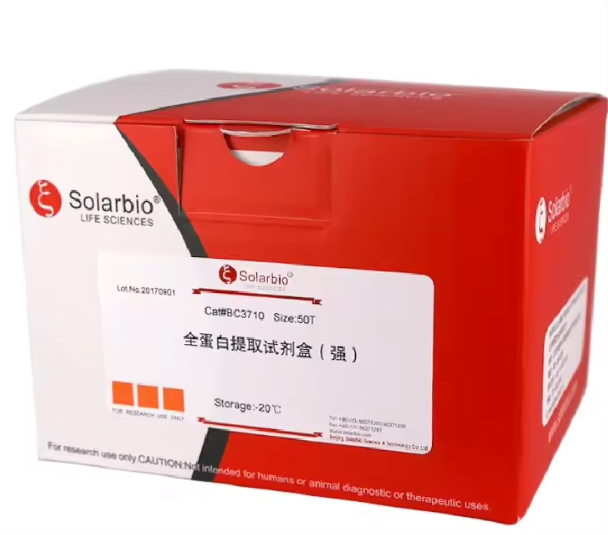
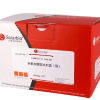
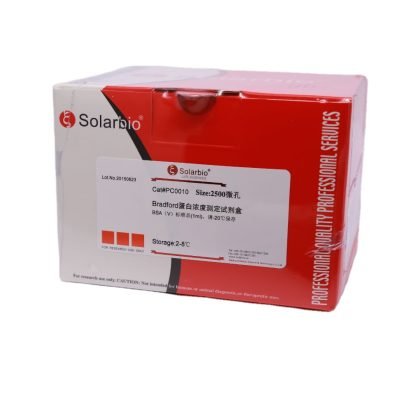
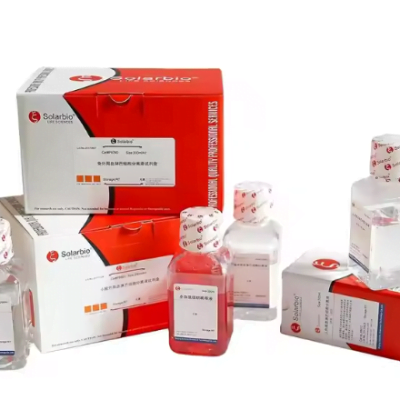
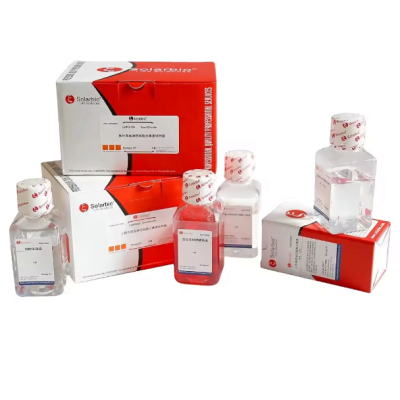
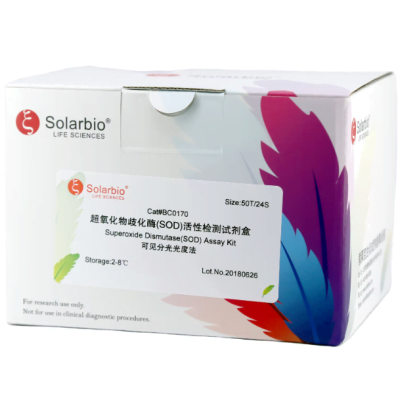
Commentaires
Il n'y a pas encore de critiques.